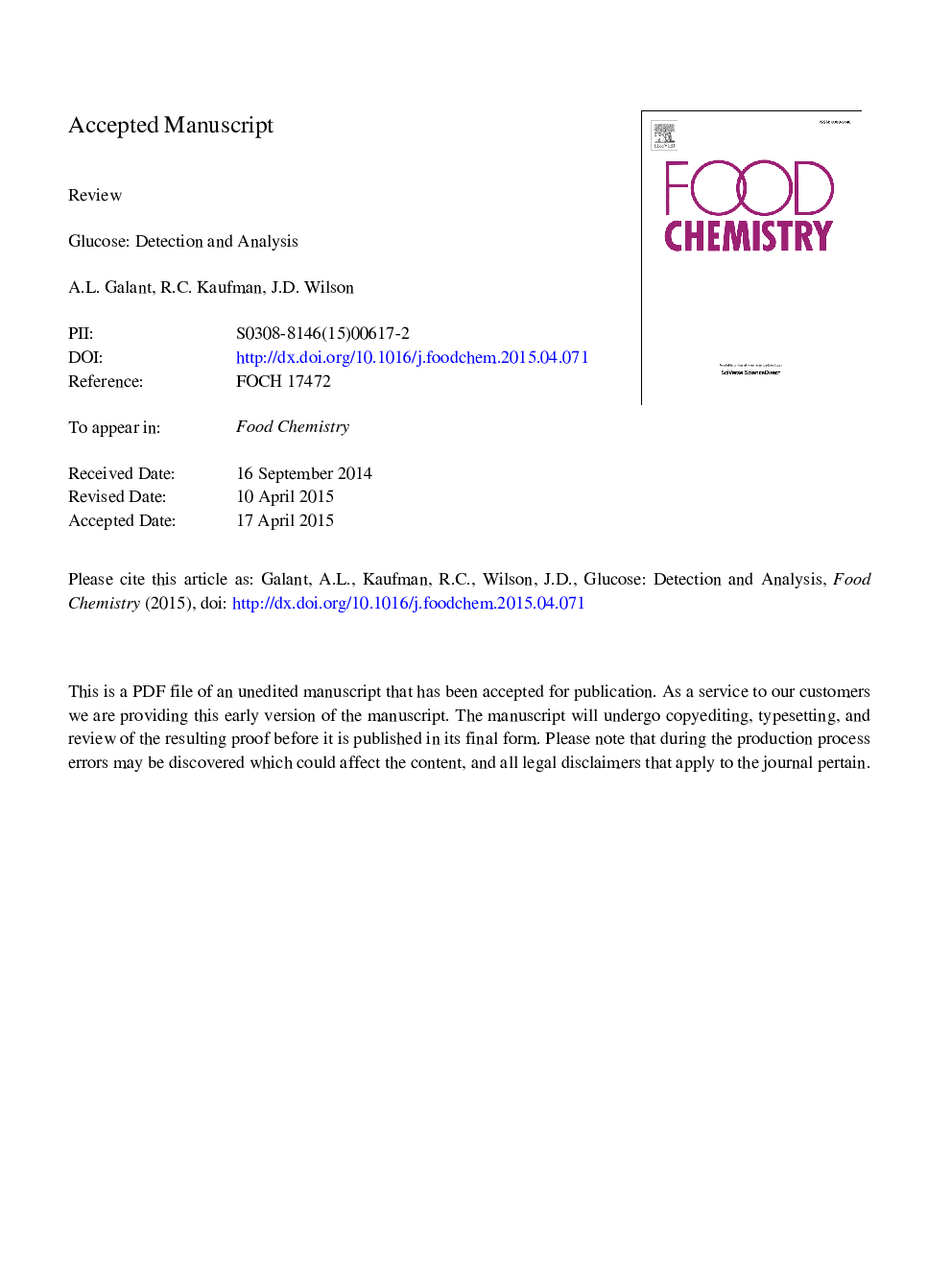| Article ID | Journal | Published Year | Pages | File Type |
|---|---|---|---|---|
| 7590430 | Food Chemistry | 2015 | 33 Pages |
Abstract
Glucose is an aldosic monosaccharide that is centrally entrenched in the processes of photosynthesis and respiration, serving as an energy reserve and metabolic fuel in most organisms. As both a monomer and as part of more complex structures such as polysaccharides and glucosides, glucose also plays a major role in modern food products, particularly where flavor and or structure are concerned. Over the years, many diverse methods for detecting and quantifying glucose have been developed; this review presents an overview of the most widely employed and historically significant, including copper iodometry, HPLC, GC, CZE, and enzyme based systems such as glucose meters. The relative strengths and limitations of each method are evaluated, and examples of their recent application in the realm of food chemistry are discussed.
Keywords
PQQ-GDHG6PG6PDHNPDtrimethylsilylGDHflavin adenine dinucleotideDCPIPBGEELSDSECTMS2,6-dichlorophenol indophenolRefractive index detectorflame ionization detectorGlucose oxidasebackground electrolyteFADGoxDetectionPulsed amperometric detectionEvaporative light scattering detectionGOPODridFIDNon-enzymatic glucose sensorreversed phaseHILICPADSize exclusion chromatographyhydrophilic interaction chromatographyhigh performance liquid chromatographyHPLCGas chromatographyQuantificationGlucoseGlucose 6-phosphateglucose 6-phosphate dehydrogenaseglucose metersIodometry
Related Topics
Physical Sciences and Engineering
Chemistry
Analytical Chemistry
Authors
A.L. Galant, R.C. Kaufman, J.D. Wilson,
